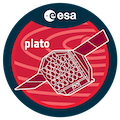Speaker
Description
We present new CHEOPS data for the two inner super-Earths (P=3.5 and 6.4 days) and one outer sub-Neptune (P=13.6 days) of the compact HIP 29442 system, allowing us to significantly improve the radius precision and accuracy of all three planets. Especially for the 6.4 day planet, this significantly changes the inferred nature of the planet and leads us to conclude that caution is required when determining the radii of small planets from multi-year TESS photometry when the per-transit SNR is low and there are significant gaps between observations. Together with the very precise masses from Espresso, these precise radius measurements make HIP 29442 an ideal system to probe the internal structure of its planets. As there are always multiple compositions that can explain the observed mean density of a planet, we apply Bayesian inference to obtain probability distributions for each planet's internal structure. We developed a new and improved internal structure framework that allows us to model each planet with either separate water and H/He layers or a uniformly mixed water and H/He envelope. It also includes a set of equations of state that allows for both molten and solid mantle and core layers and different options for compositional priors. In addition, we studied possible formation and evolution pathways of the system by comparing it to synthetic systems produced with the latest version of the Bern model.

